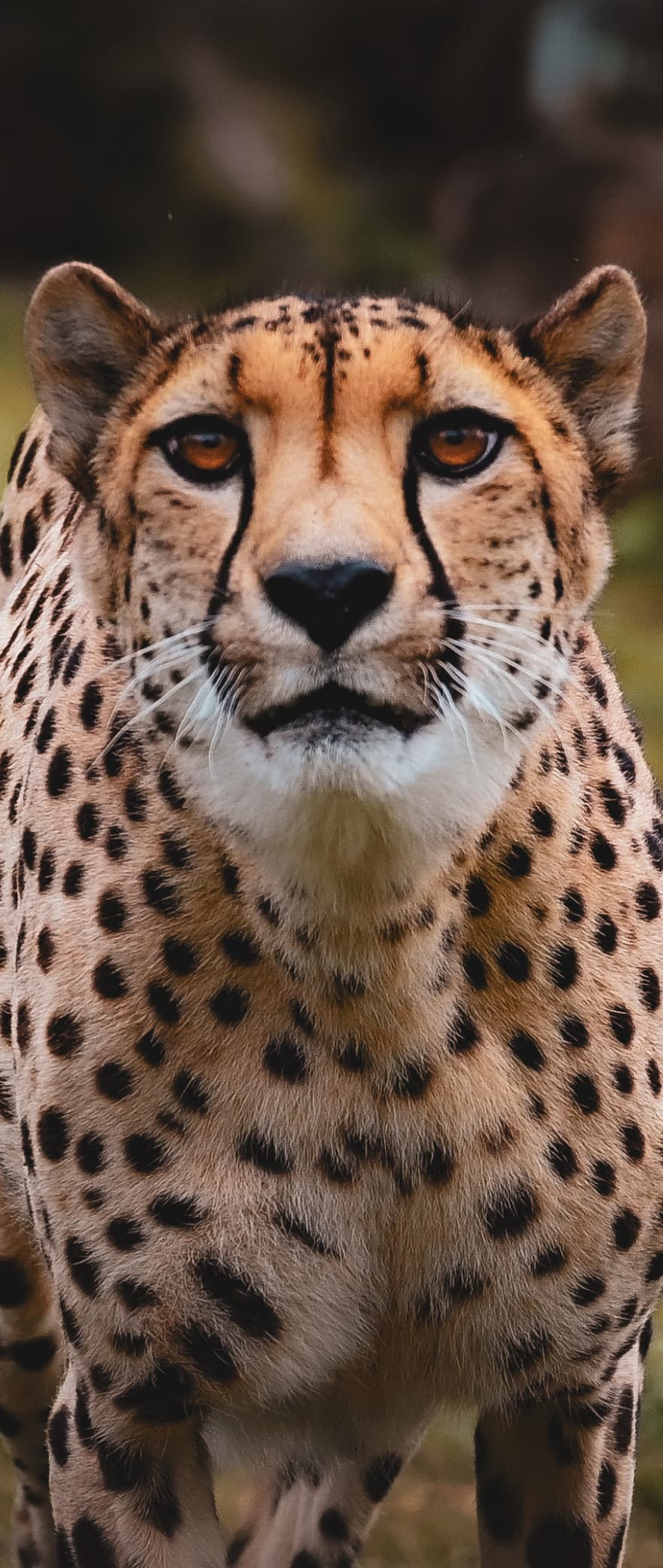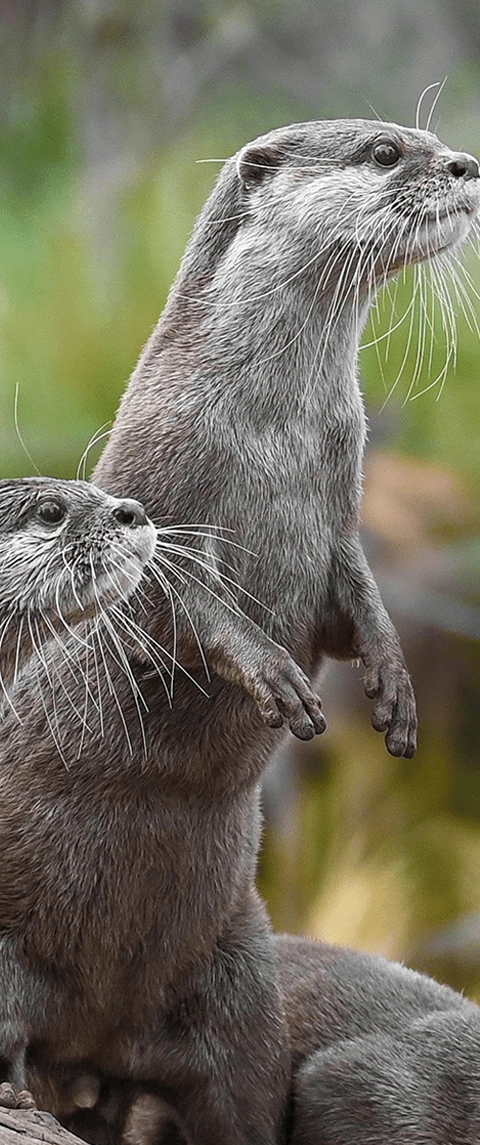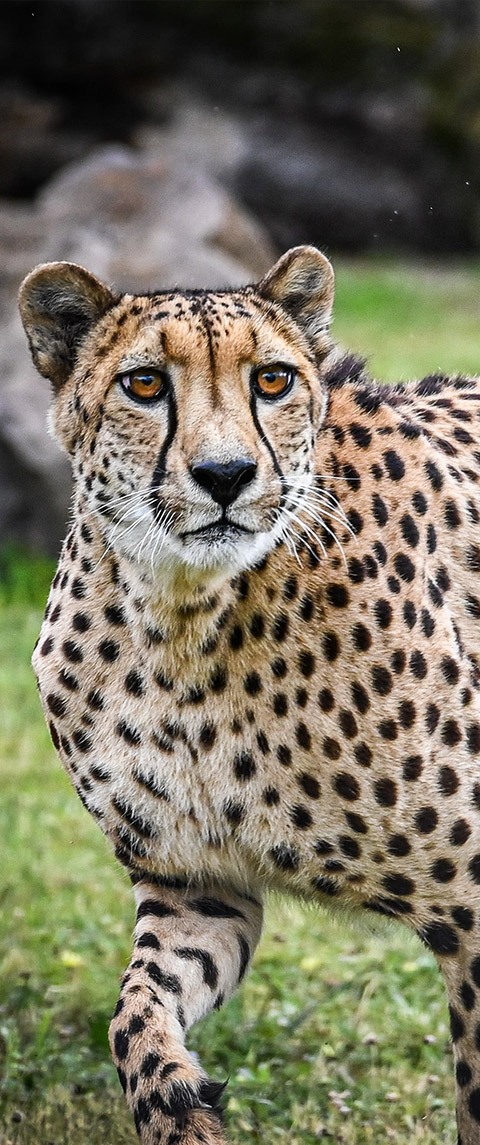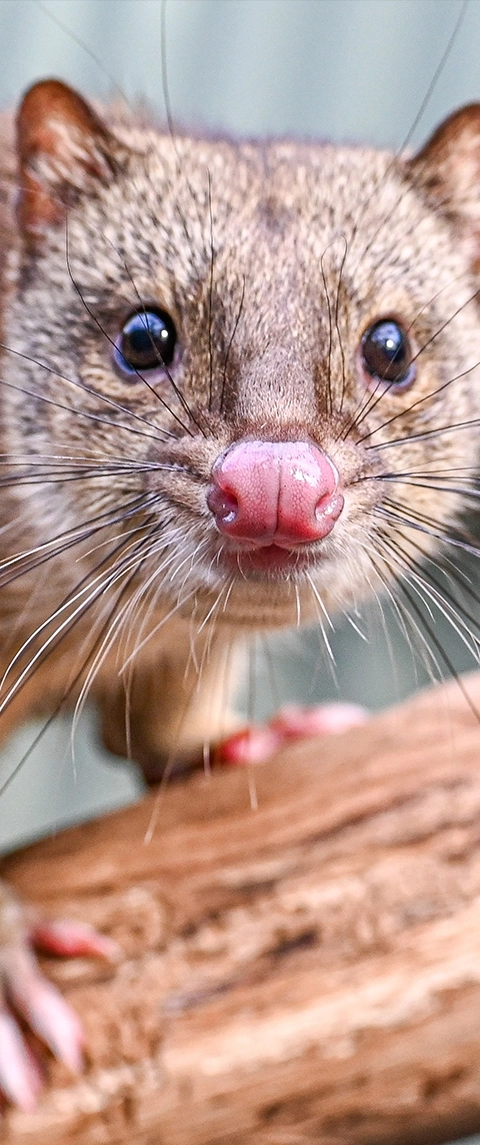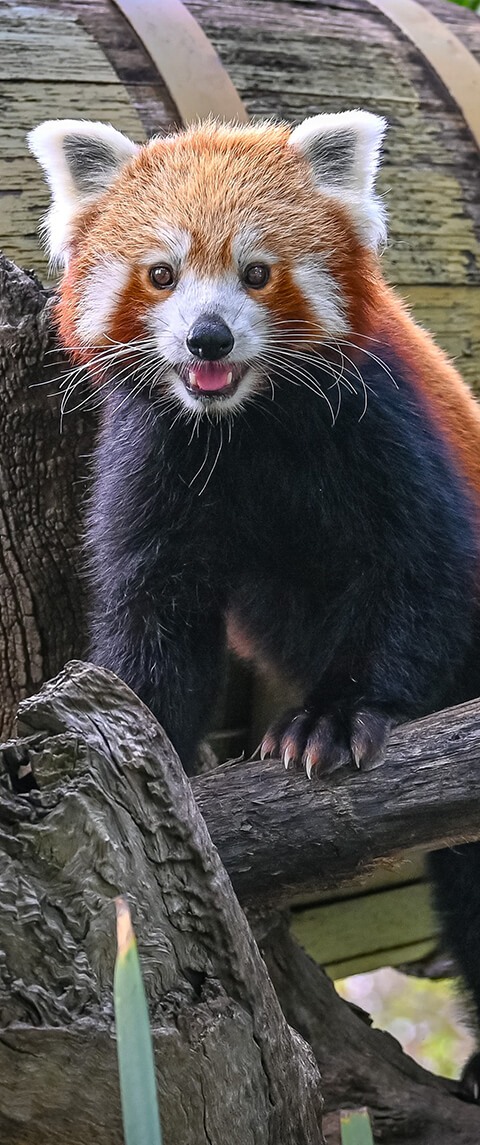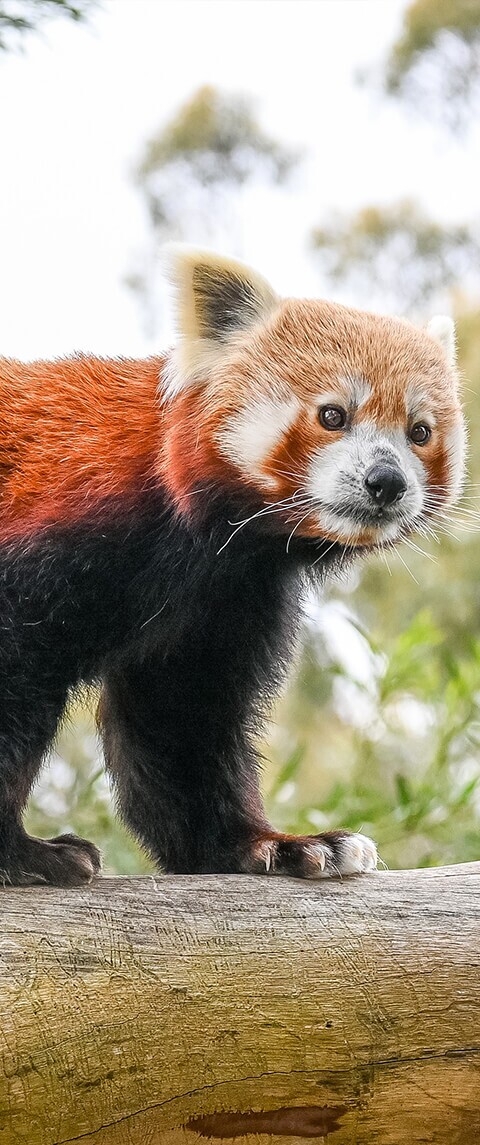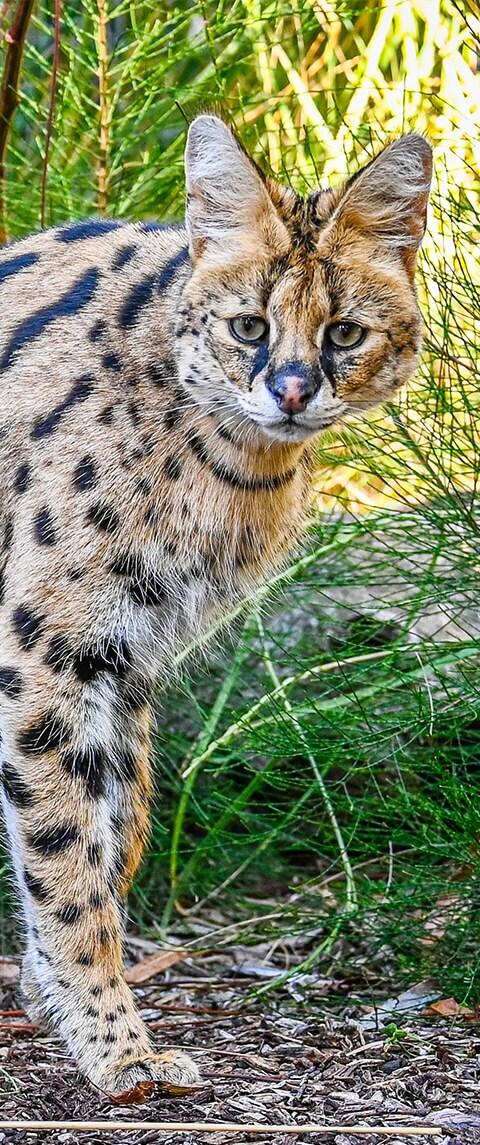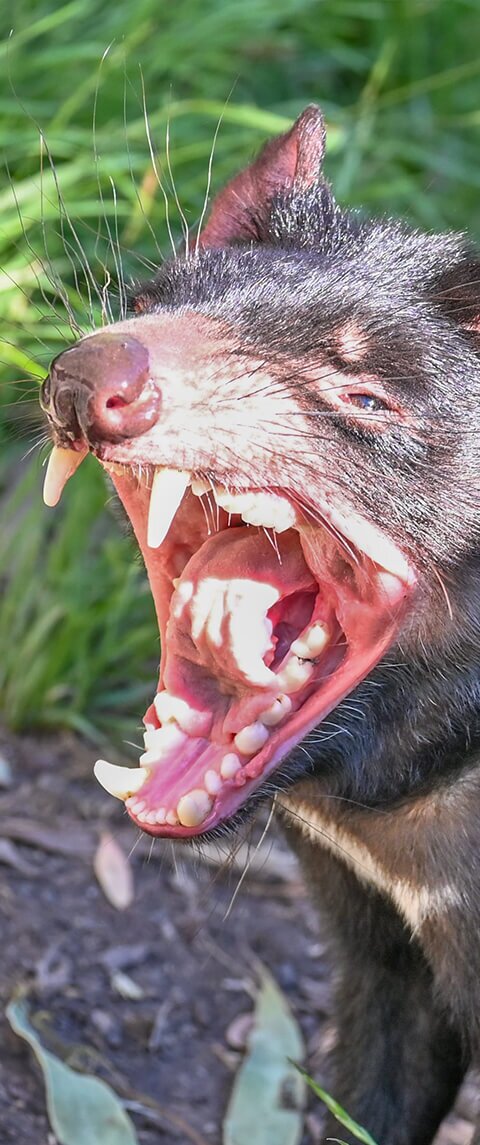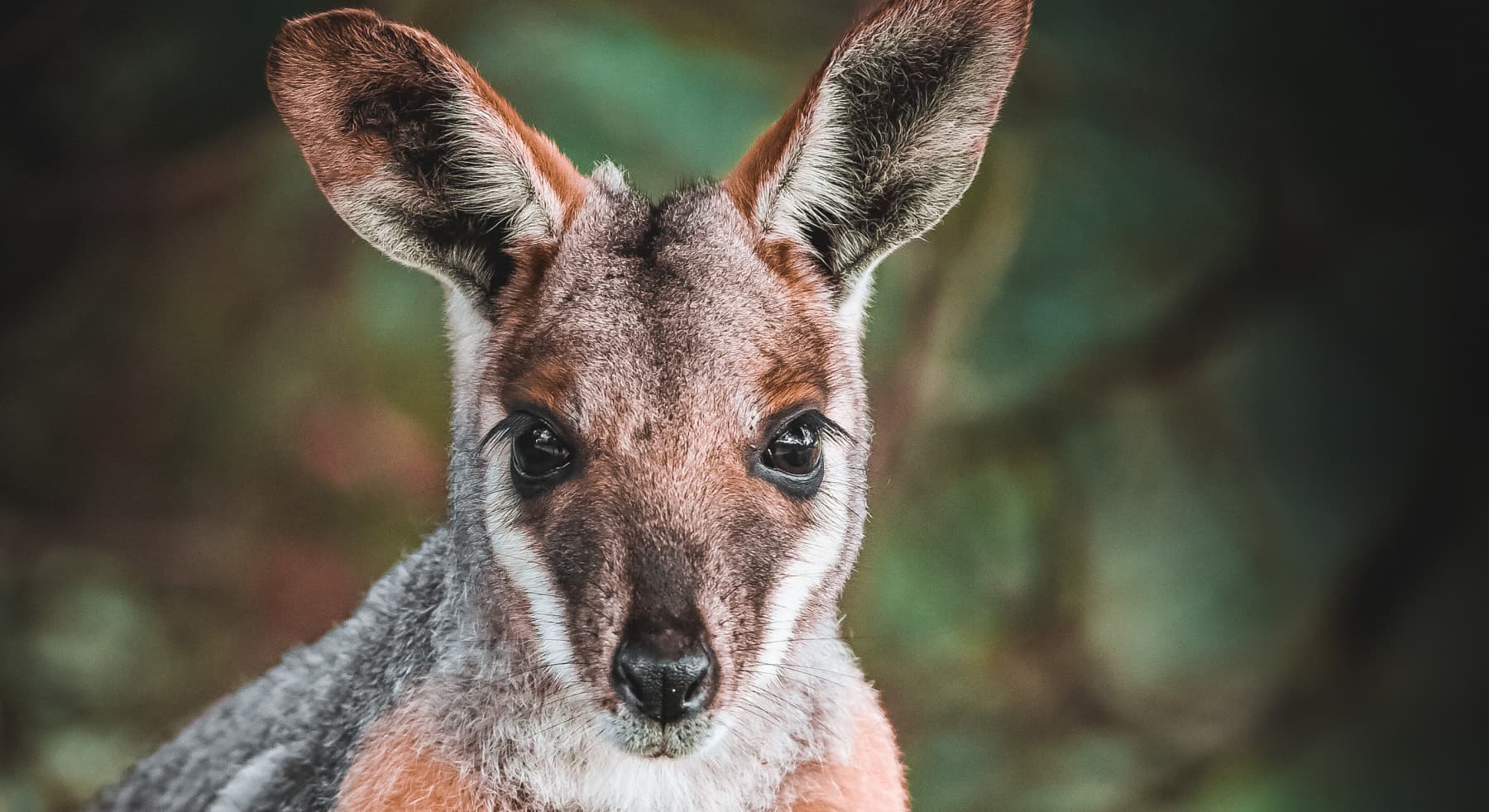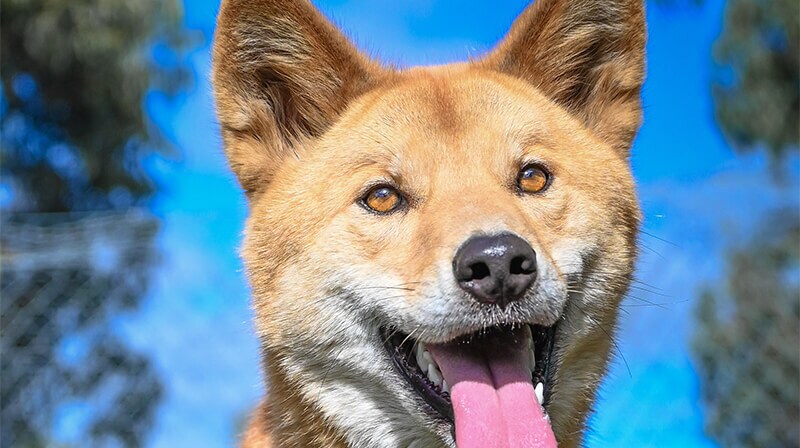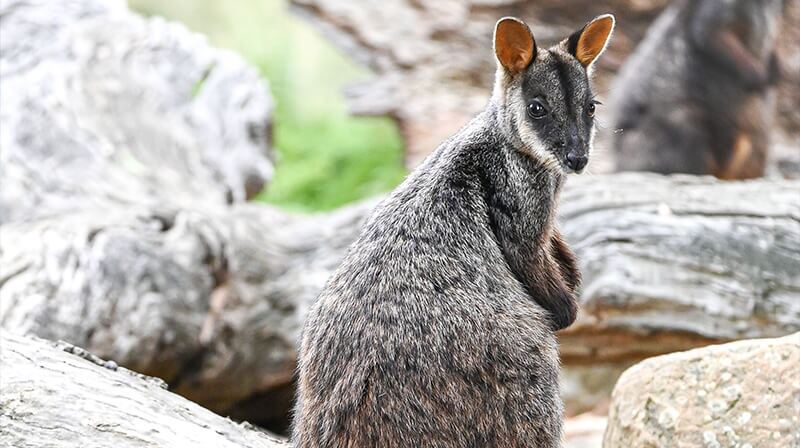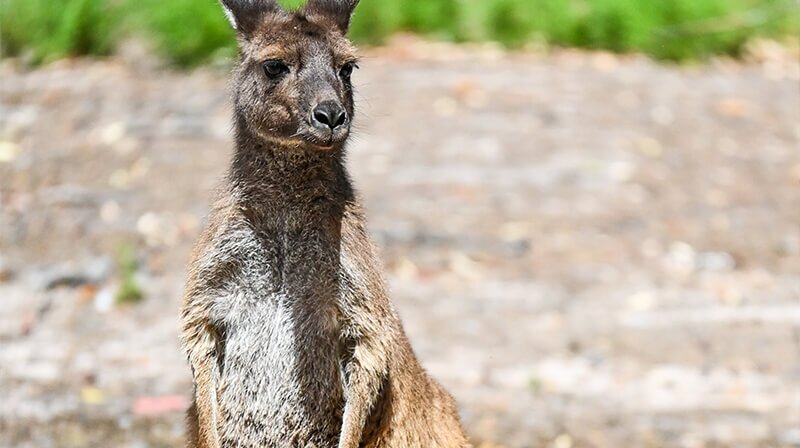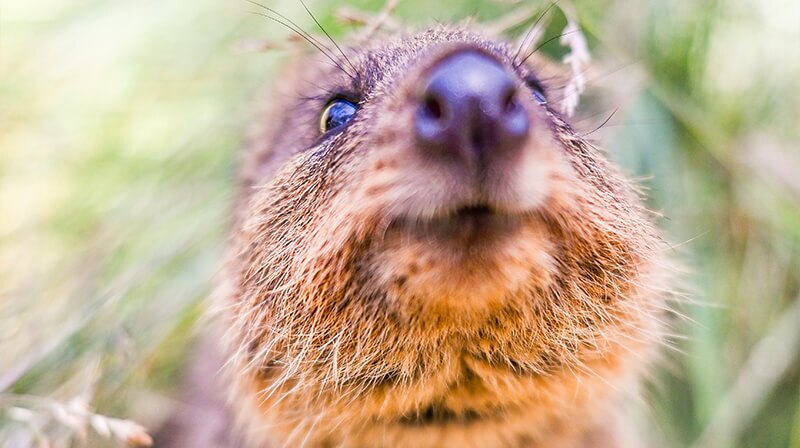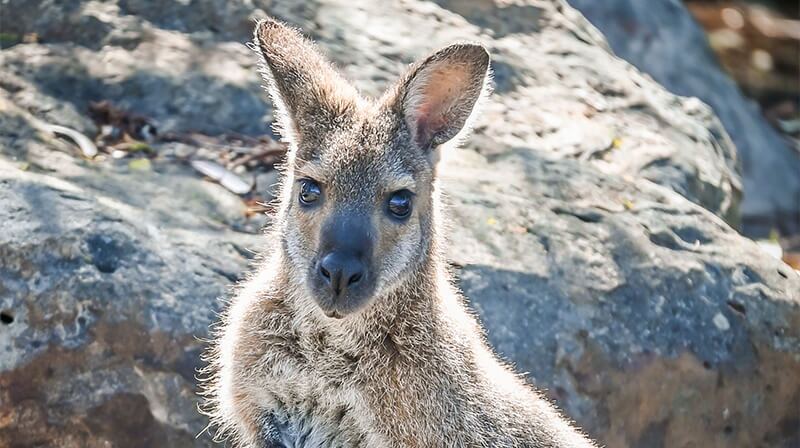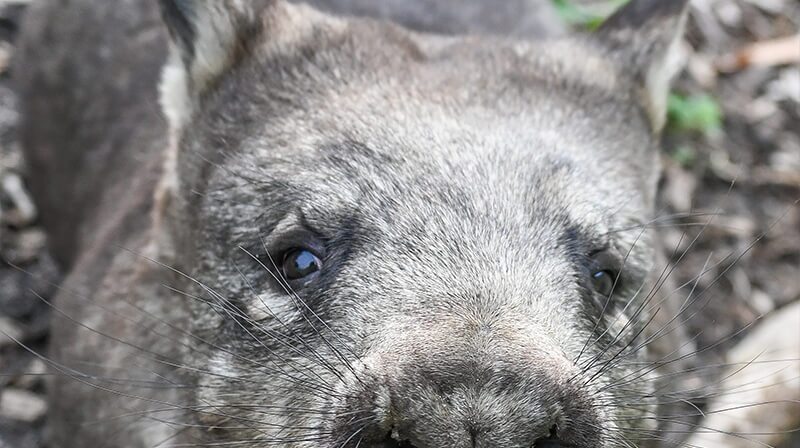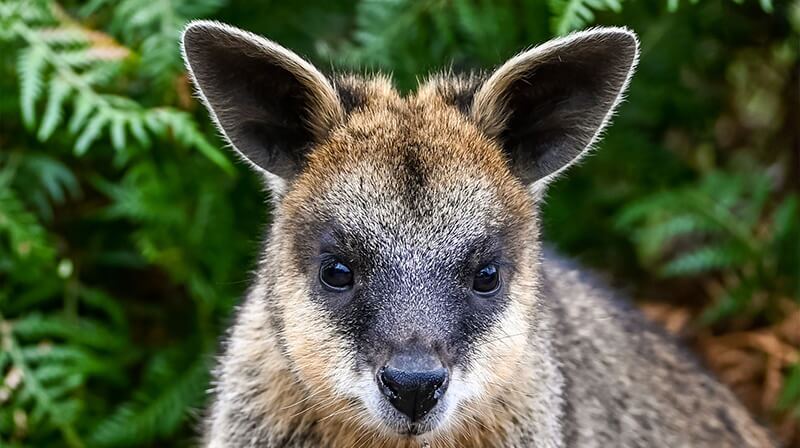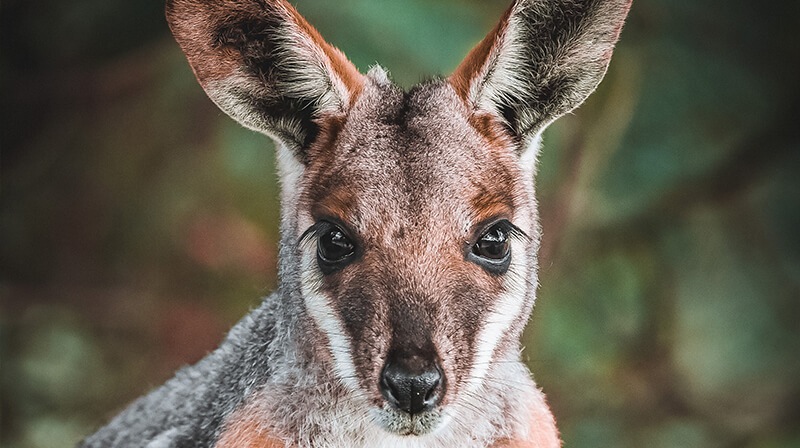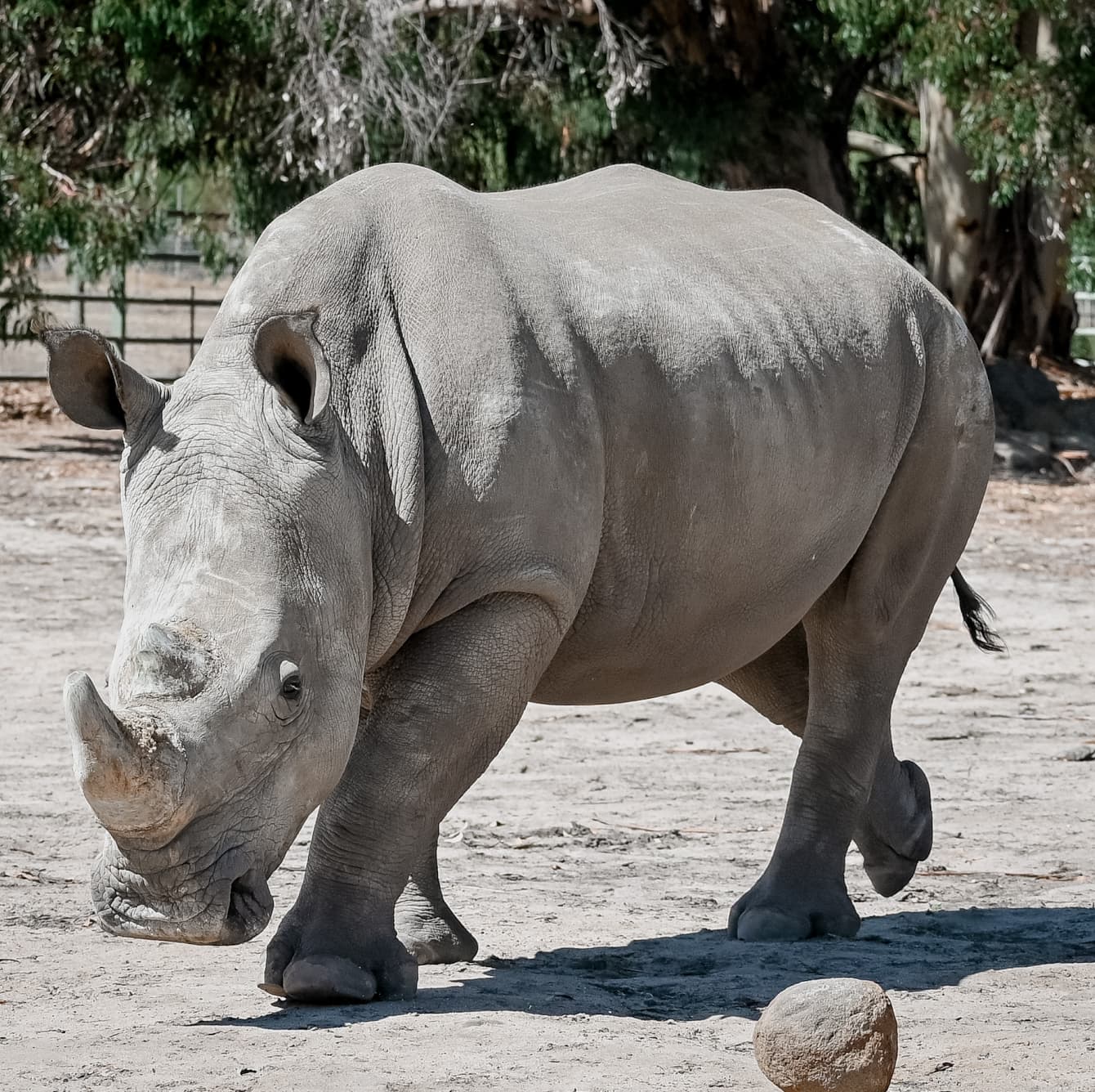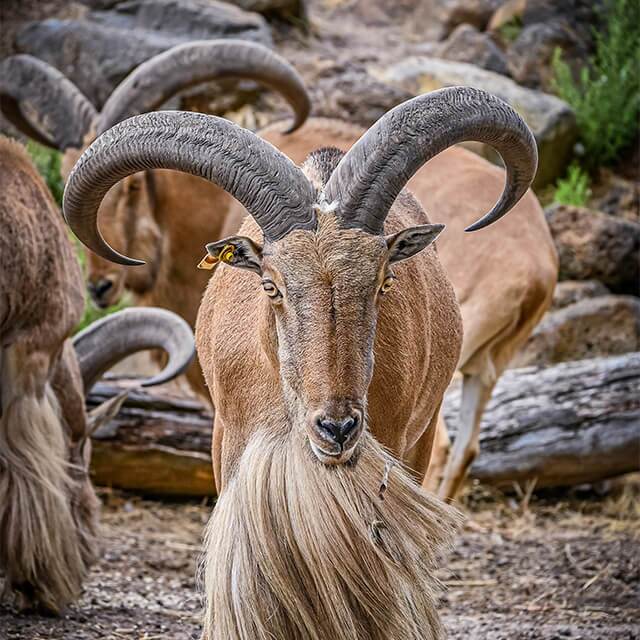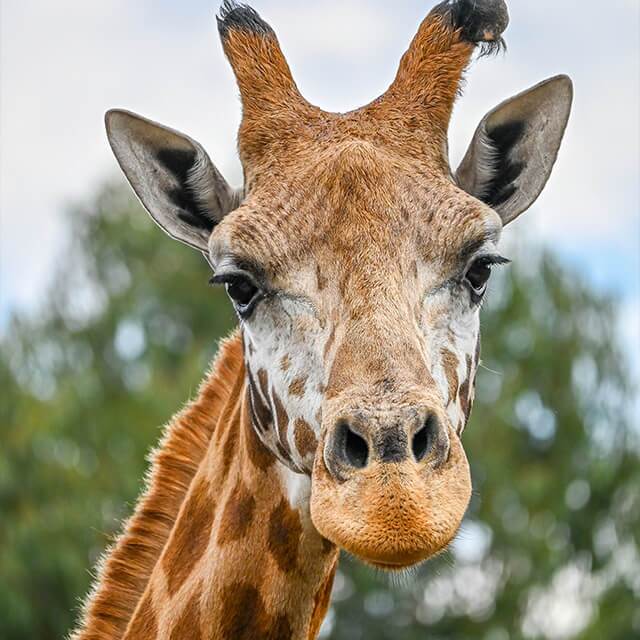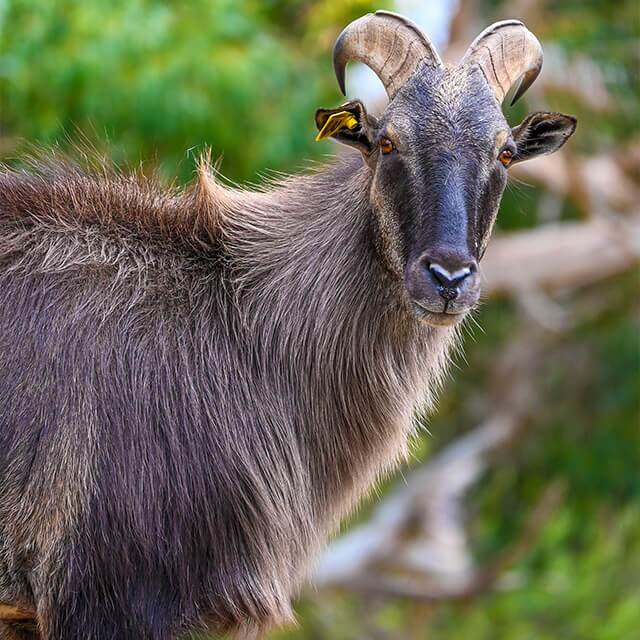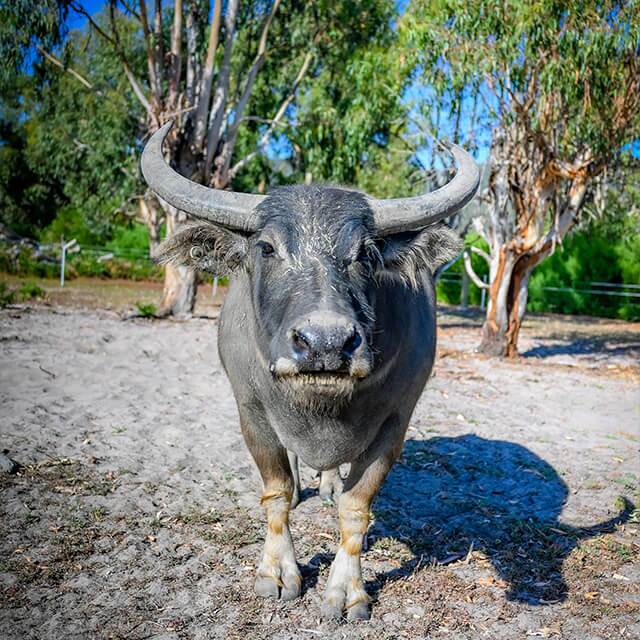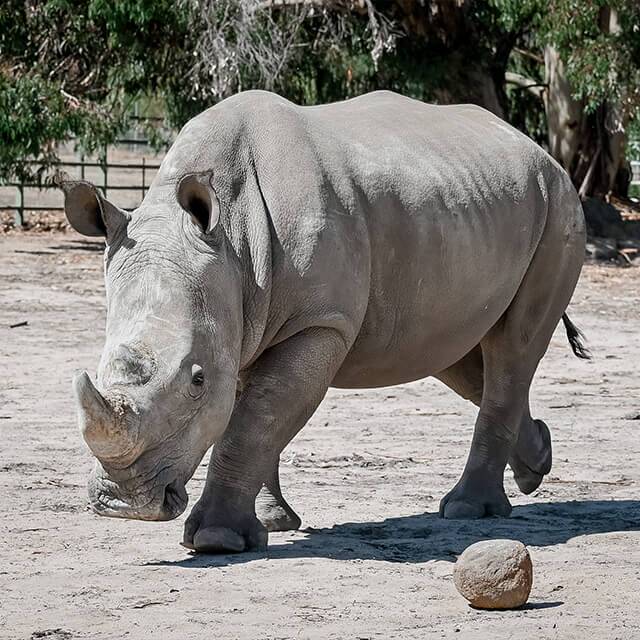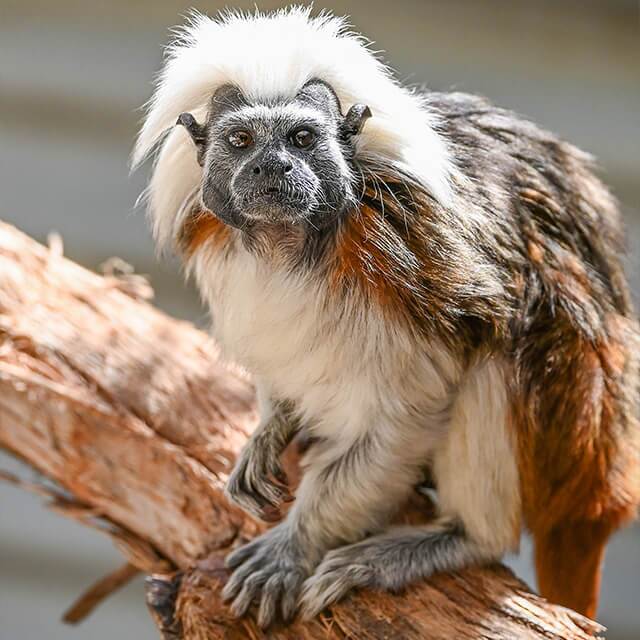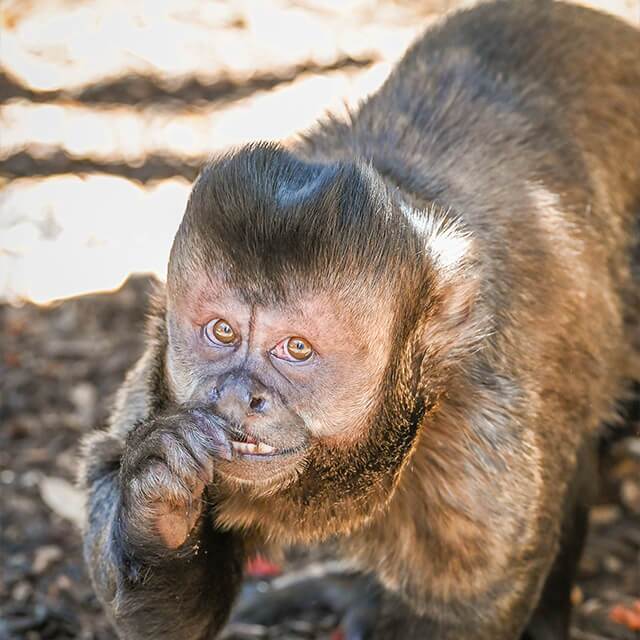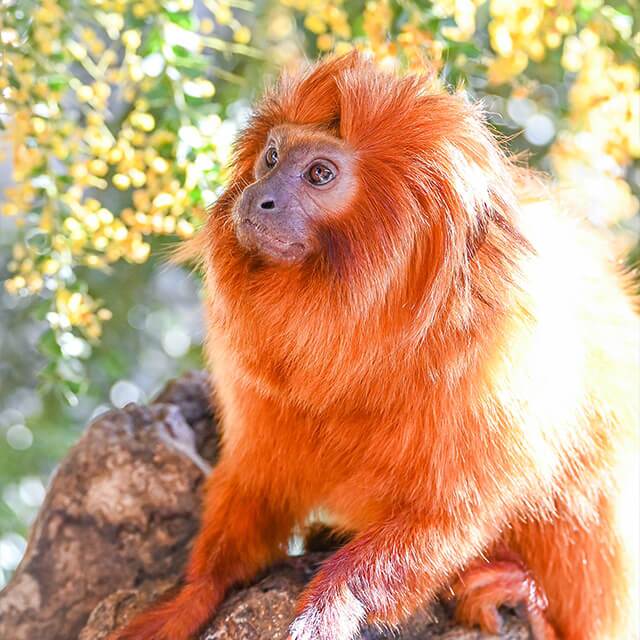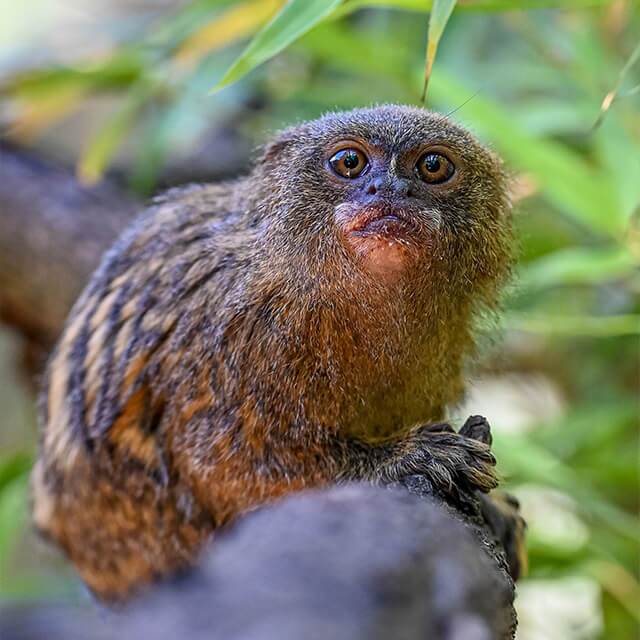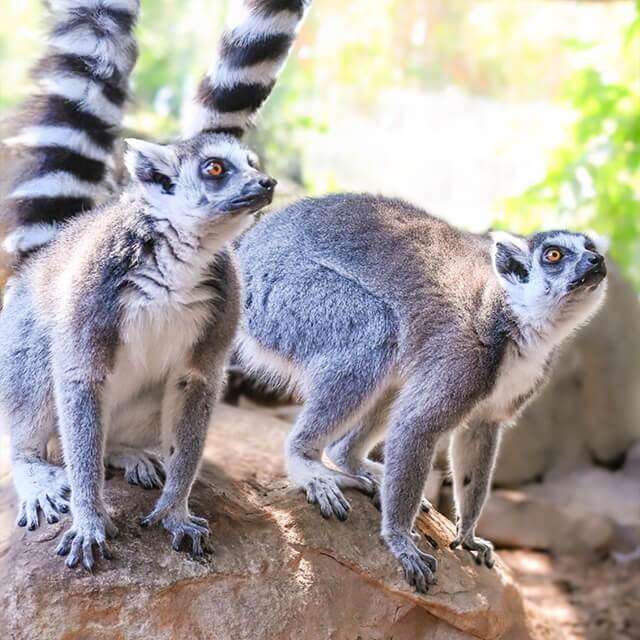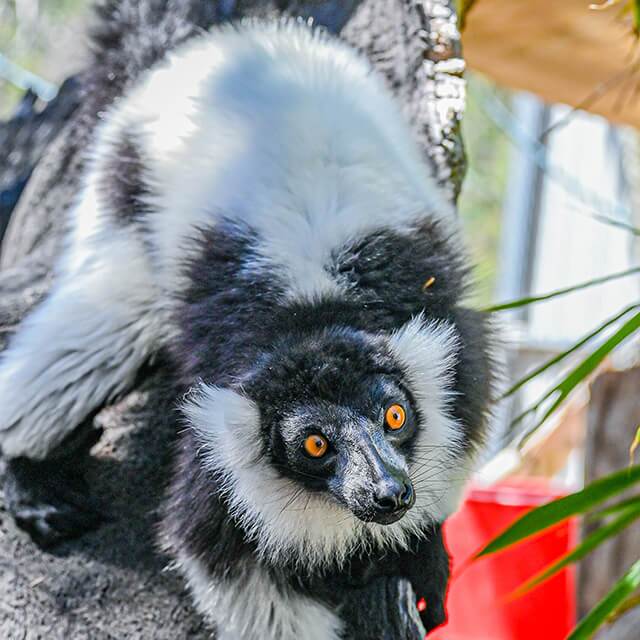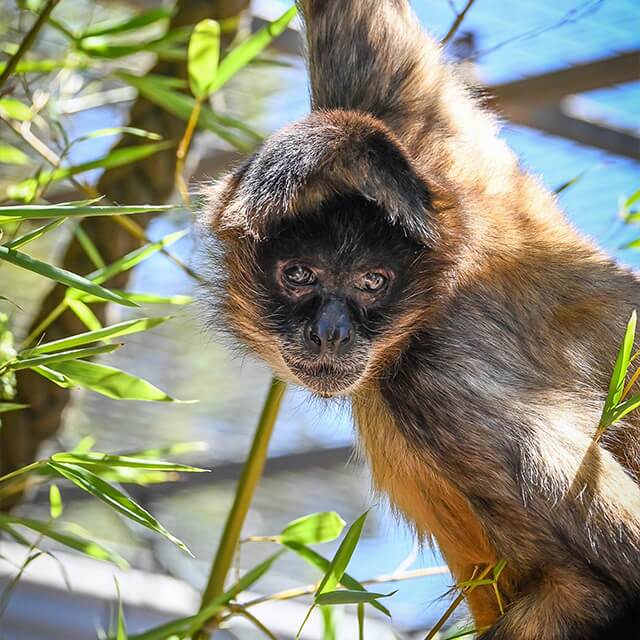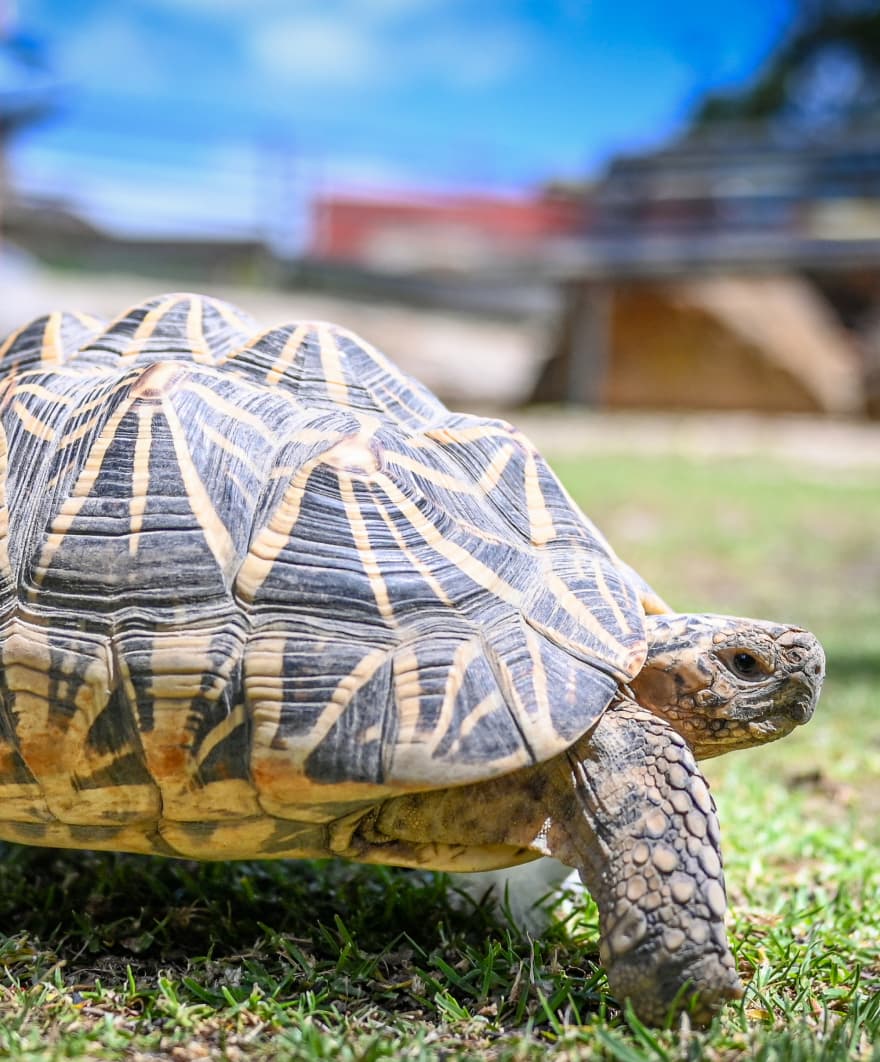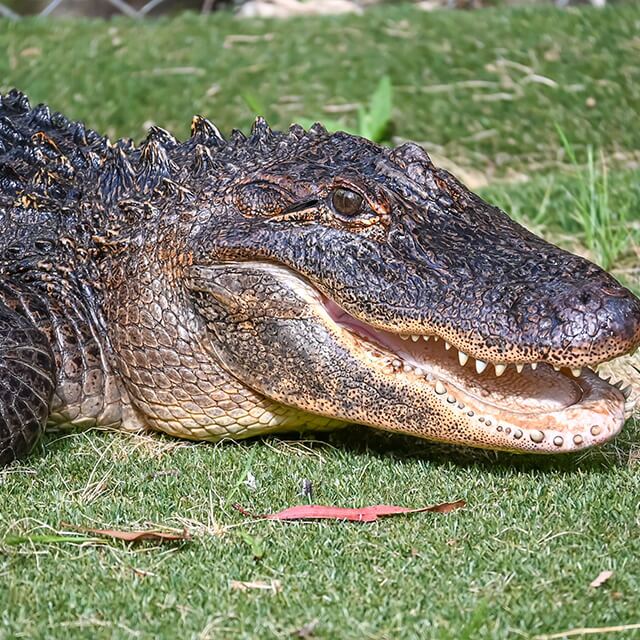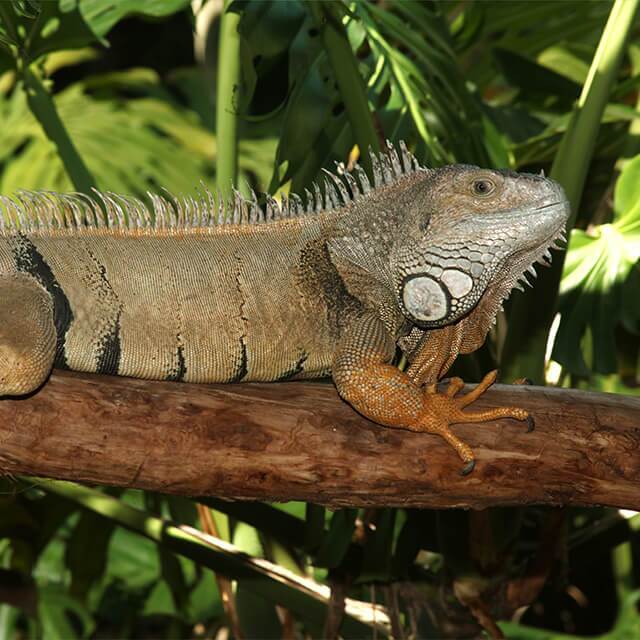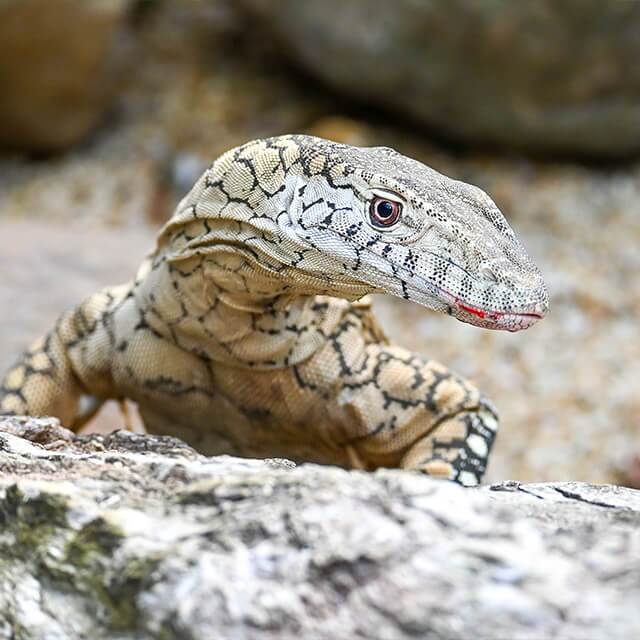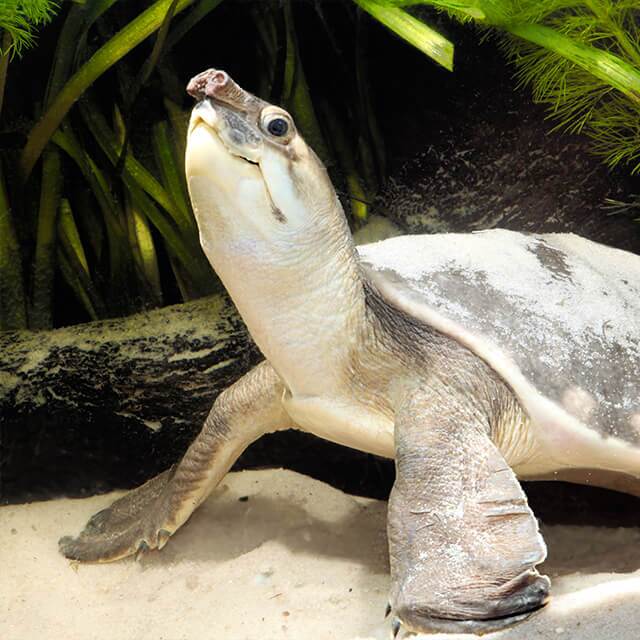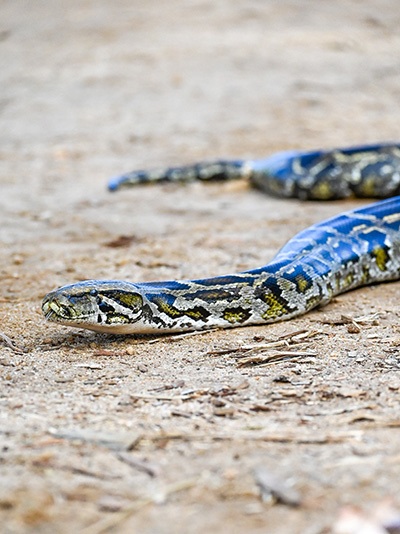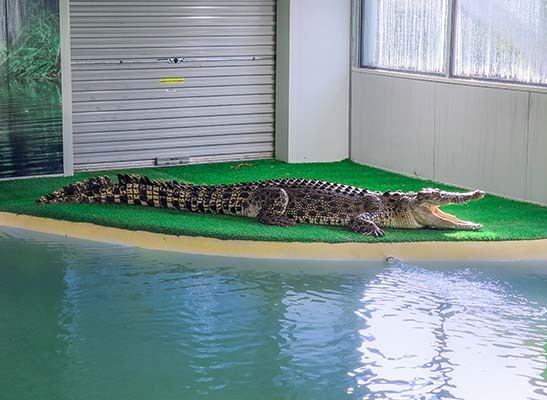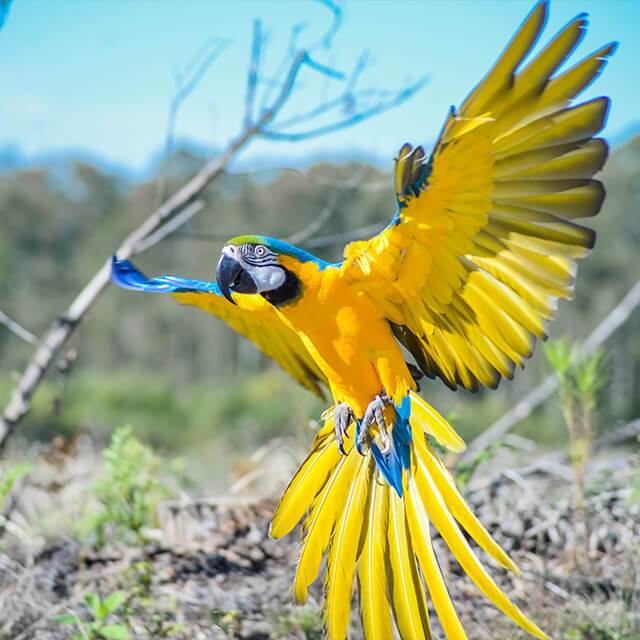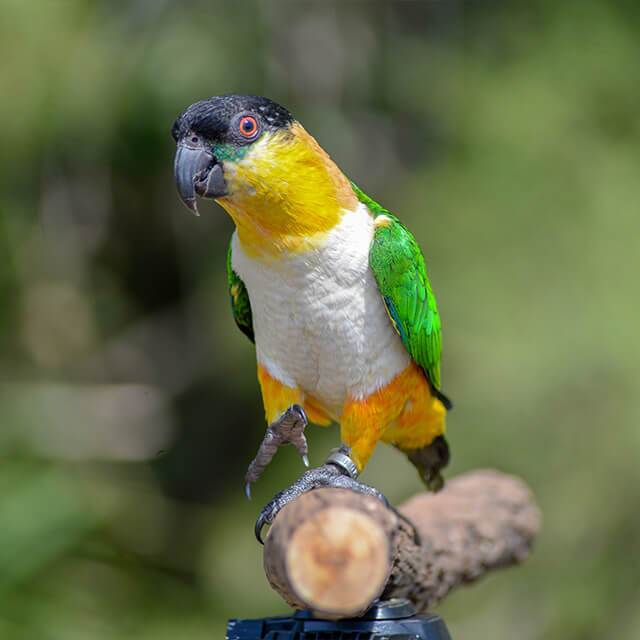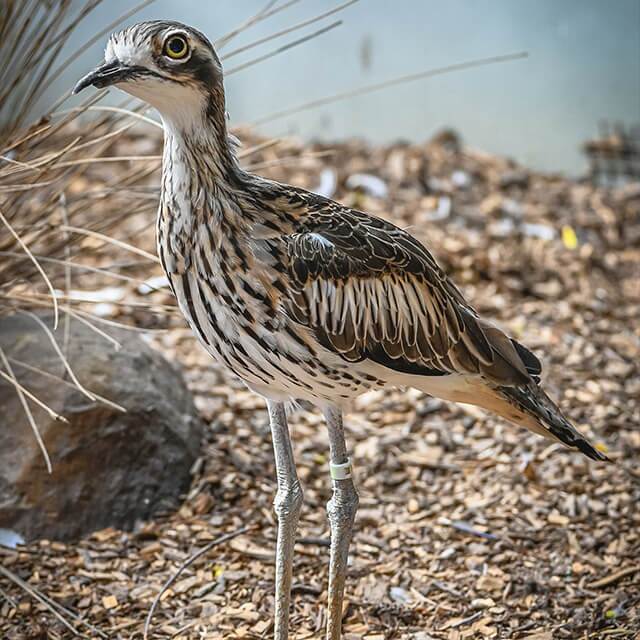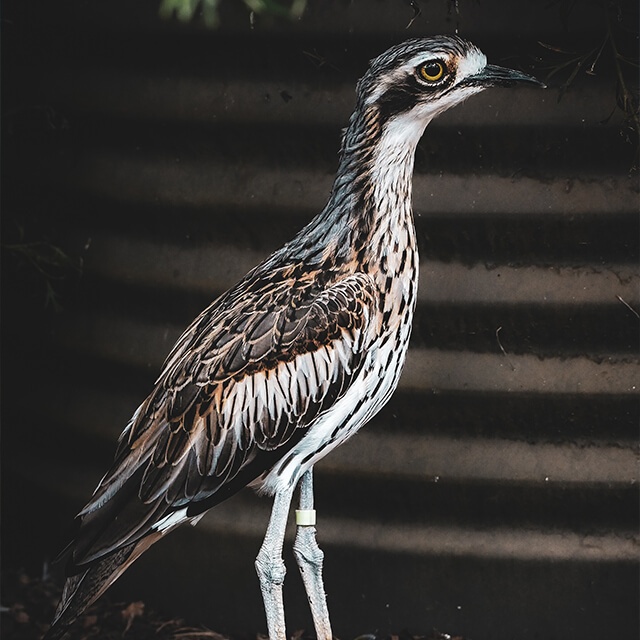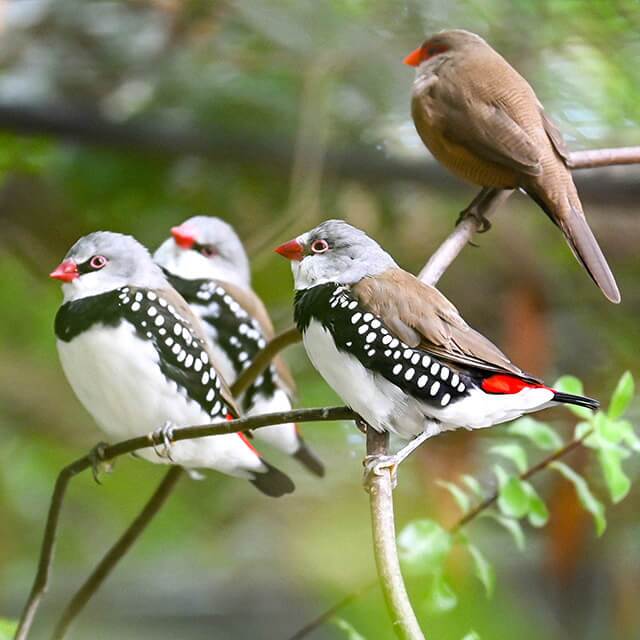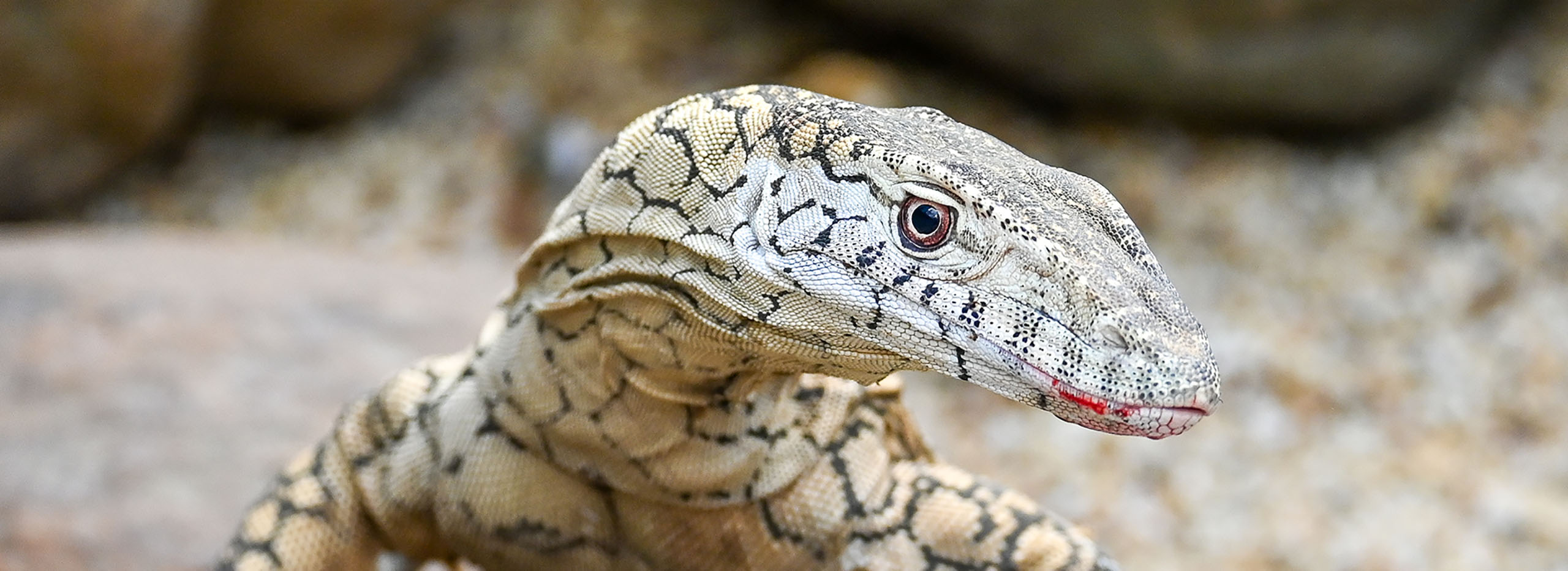
Reptiles
We have a large reptile collection of over seventy individuals that include Australia’s largest reptile, the saltwater crocodile and the unusual pig-nosed turtle. Our largest snake, a four-meter Burmese python named Doug is a firm favourite with our visitors. The warmer months is the best time to view the reptiles, but many can be seen year-round.

Reptiles

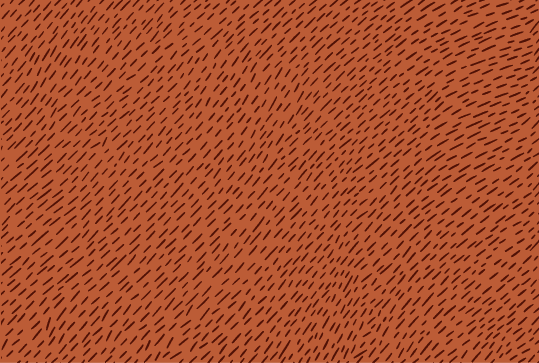
Estuarine Crocodile
They are the largest living reptile in the world. Crocodiles are an old lineage and have been thriving in their environment since before the dinosaurs went extinct. They occur through the estuaries, waterways, and seas of northern territory and reach Southeast Asia. The comeback of the saltwater crocodile from near-extinction levels in the 1970’s is one of Australia’s and the world’s great conservation success stories. In waterways in the Northern Territory alone there’s now thought to be about 100,000 juvenile and adult crocodiles, about 10,000 of which are found in World Heritage-listed Kakadu National Park. They stalk their prey from the water edge relying heavily on the element of surprise to capture prey. Their diet consists of fish, birds, sea turtles and mammals up to the size of a water buffalo and are also known to be cannibalistic. They bite down on their prey with one of strongest bites recorded, strong enough to break bones, their teeth interlock perfectly to keep hold of any prey item big or small that they can drag into the water to drown and consume. Females lay 40-60 eggs in a sandy nest that they guard and from which they carry the young hatchlings to nearby water where they protect them for the first few weeks. Nest temperature determines the sex of the young with cooler temperatures resulting in more females. Less than 1% of young survive to adulthood.
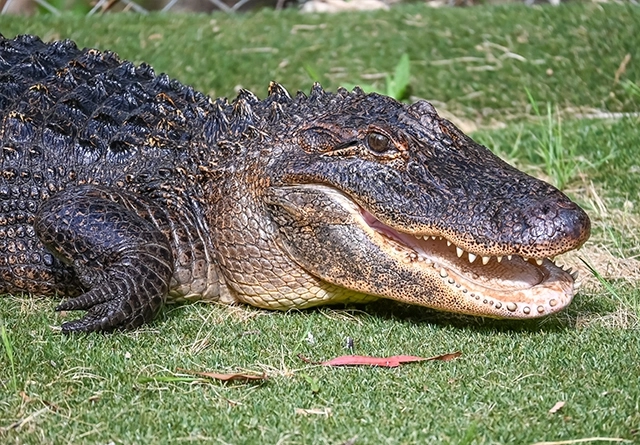

Alligator
Brought back from the brink of extinction, over a million of these reptiles survive today. American alligators live in the wild in the southeastern United States where they live in rivers, lakes, ponds, swamps, bayous, and marshes. These reptiles are kind of clumsy on land, but they’re built for life in the water. Great swimmers, they are equipped with webbed feet and strong tails that propel them through the water. An average male American alligator is three to five meters long. Half of its length is its massive, strong tail. An alligator can weigh as much as half a ton, but an average male weighs between 250 kilograms. Females are usually smaller than males. As big and ferocious as the female alligator may look, she is a gentle mother. A mother alligator makes a nest on shore, where she lays her eggs. Then she guards her eggs until they’re ready to hatch. At that point the babies start to make noises, and their mother hears her little ones’ peeps as they break out of the eggs. She gently carries them—in her mouth—to the water nearby. Newly hatched young are only about 15 to 20 centimetres long, and very vulnerable. Their mother protects them from predators, which include raccoons, bobcats, birds, and even other alligators. The young alligators stay with their mother for up to two years, after which, they’re able to fend for themselves.
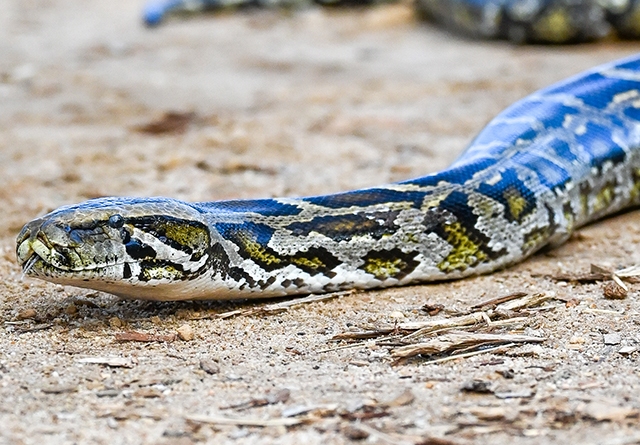

Burmese Python
The Burmese python is one of the largest species of snakes. It is native to a large area of Southeast Asia and is listed as Vulnerable on the IUCN Red List. Burmese pythons typically grow to 5 m 75kg. Male and females differ in size; females average only slightly longer, but are considerably heavier and bulkier than the males. they are excellent swimmers and need a permanent source of water. They can stay under water for up to 30 minutes. Naturally they live in grasslands, marshes, swamps, rocky foothills, woodlands, river valleys, and jungles with open clearings and are good climbers with a prehensile tail which aids climbing. Escaped pet pythons have established and become a serious concern across South Florida, where a large number of pythons can now be found in the Florida Everglades. Burmese pythons breed in the early spring, with females laying clutches of 12–36 eggs in March or April. They remain with the eggs until they hatch, wrapping around them and twitching their muscles in such a way as to raise the ambient temperature around the eggs by several degrees. They are carnivorous and will catch and constrict small to medium sized animals before swallowing them whole.
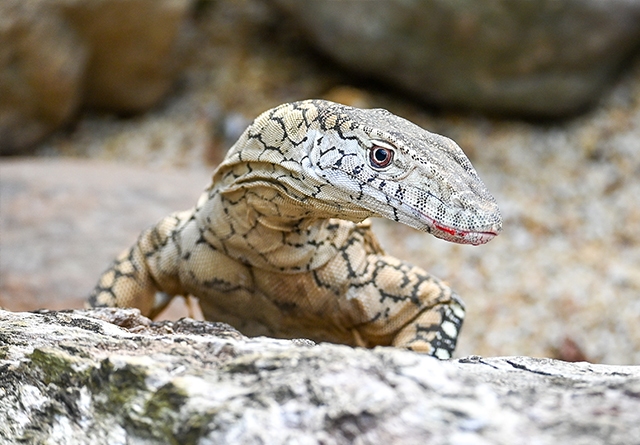

Perentie
At lengths of up to 2.5m, this is Australia’s largest and toughest lizard, the perentie is an effective hunter with highly tuned senses to assist in locating prey. By licking the air with the tongue they locate prey, generally small rodents and other monitor lizard species but in the dry Outback they take what comes and this includes scavenging. The perentie is even know to hunt wombats and dingoes. They are unique in being able to run and breathe at the same time which keeps them well oxygenated during the hunt. They can maintain speeds of up to 35kmh for some time and can run on all four limbs or with the hind limbs only and the front of the body held slightly upright. They usually launch a surprise attack and the mouth oozes more than drools with the bite of the perentie being venomous. Their bite reduces the victims blood pressure resulting in dizziness and enables the perentie to kill its prey. The prey includes highly venomous snakes and the perenties has developed a resistance to snake venom.
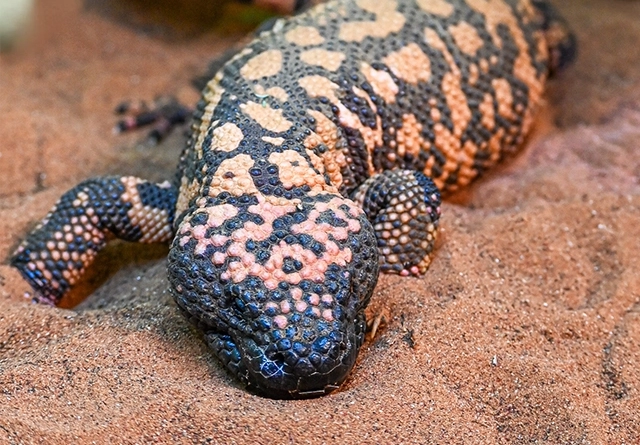

Gila Monster
The Gila monster (pronounced Hee-la) is a species of venomous lizard native to the Southwestern United States and the northwestern Mexican state of Sonora. It is a heavy, slow-moving reptile, up to 56cm long, and it is the only venomous lizard native to the United States. They are sluggish in nature, so it is not generally dangerous and very rarely poses a real threat to humans. The skin appears as small studs and varioes from black and yellow to black and light pink. They inhabit scrubland, succulent desert, and oak woodland, seeking shelter in burrows, thickets, and under rocks in locations with a favorable microclimate and adequate humidity. Gila monsters rely heavily on the use of shelters and spend up to 90% of their time dwelling there. The Gila monster’s diet consists of a variety of food items – small mammals, birds, snakes, lizards, frogs, insects, other invertebrates, carrion, and the eggs of birds, lizards, snakes, and tortoises. Three to four large meals in spring are claimed to give them enough energy for a whole season. While the Hila’s venom is toxic to humans, derivatives of some of the venoms components are used in human medicine.
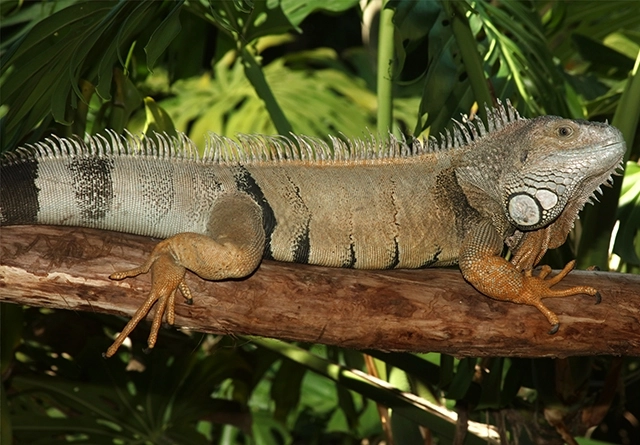

Green Iguana
They live primarily above the ground in vegetation and have short, powerful limbs; sharp claws and a long strong tail that assist in climbing. The large flap of skin (dewlap) that hangs from throat and helps to regulate temperature and males also use it by raising it during display. They will often jump from tree to water using their powerful tail for swimming to escape. They are also able to leap down twelve meters feet without injury. Adult males can weigh up to six kilograms and reach up to two meters in length with females are slightly smaller. Not fussy eaters, they are omnivorous as young, but adults are almost exclusively herbivores; fruits, flowers, leaves; insects and snails opportunistically; young iguanas eat more insects and shift to 95% vegetation as they age. To attract a mate, mature males may turn orange during breeding season. Females lay 10-50 eggs which take 60-85 days to hatch. They live for up to fifteen years. Iguanas can hold their breath for up to 30 minutes. Their tail has weakened vertebrae so the iguana can break free and escape if caught by the tail. Iguanas are also able to whip their tail in defense, leaving behind a stinging welt or worse.
Iguana meat is a valuable source of protein; theoretically, farming iguanas could yield more meat per acre than cattle, while requiring only 70% of what a chicken consumes. With the loss of habitat due to deforestation, iguana farming research is on the rise.
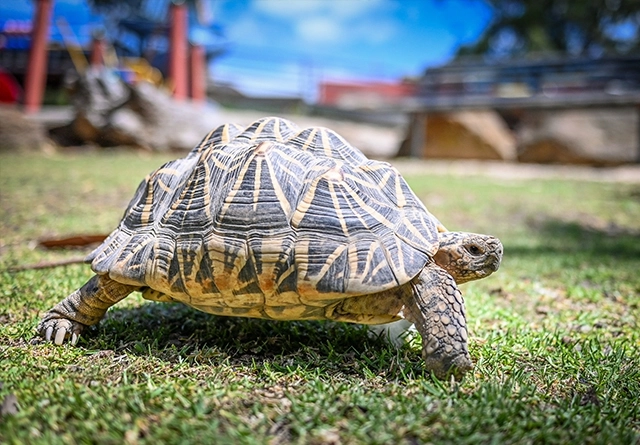

Indian Star Tortoise
The Indian star tortoise is a threatened tortoise species. Its name comes from the star-like patterns that feature on its high-domed shell. This species lives in three separate parts of the Indian subcontinent, southeast of and on Sri Lanka. They occupy a wide variety of habitats. These solitary animals do not hibernate, but when it is very dry and hot, or very cold, they stay inactive. Males compete for females by ramming rival males or flipping them onto their backs. Females in this species are often much larger than males. Breeding starts when the rainy season arrives. About 60 – 90 days after mating, typically in the evening, females start to wander around and sniff the ground. When an acceptable nest site is found, a female will begin to dig a flask-shaped nest, using her hind feet. After laying her eggs, she fills in the nest and flattens down the soil. Each year females lay 1-9 clutches, with 1-10 eggs in each and incubation is for 47-180 days, depending on temperature. Once the eggs are laid, there is no care given to eggs or hatchlings.
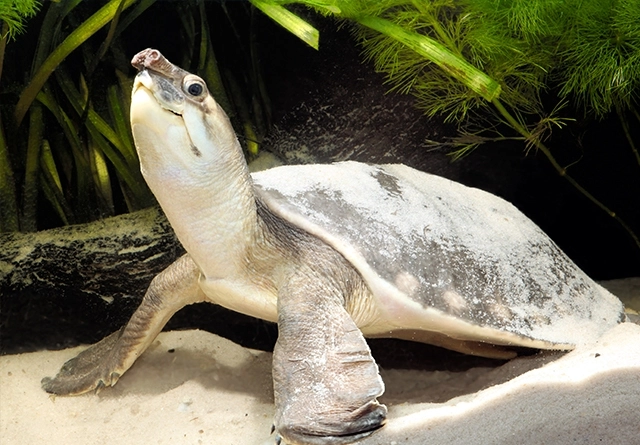

Pig-nosed Turtle
Their habitat includes rivers, estuaries, lagoons, lakes, swamps, and pools. They date back to the dinosaur era and are unlike any other species of freshwater turtle with their feet being flippers, resembling those of marine turtles and the nose looking like that of a pig, having the nostrils at the end of a fleshy snout, hence the common name. They are soft shelled with a leathery textured shell and can absorb oxygen from water through fleshy skin bumps in its throat. They are omnivorous, eating a wide variety of plant and animal matter, including the flowers, fruit and leaves of figs, as well as crabs, mussels and insects. Pig-nosed turtles are completely aquatic leaving the water only to lay their eggs in the soil on the banks. When the offspring are fully developed, they will stay inside the eggs in hibernation until it rains and water levels rise. The young emerge at the same time to ensure maximum survival. Illegal capture for the pet and food trade has seen them drastically decline in Indonesia and Papua New Guinea. Conservationists have regularly seized large numbers from smugglers and released them to the wild.

Follow us @hallsgapzoo
Error: No connected account.
Please go to the Instagram Feed settings page to connect an account.

